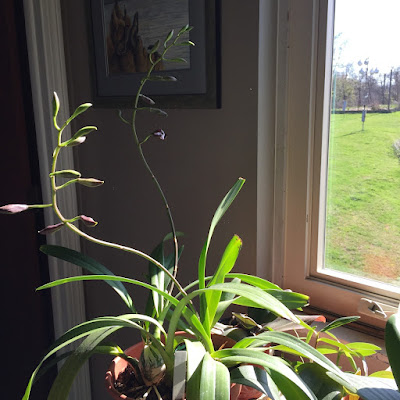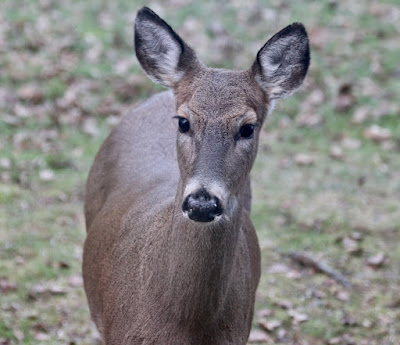From Bird to Borb
|
Widget for blogger by Way2Blogging | Via Spice Up Your Blog Gadgets
|
The Six Hundred Dollar Stinkbug
Saturday, January 21, 2023
5 commentsThe brown marmorated stinkbug, Halyomorpha halys, has been in America since it was accidentally introduced from China or elsewhere in Asia to Allentown, PA in 1998. That is not very far from me as the stinkbug flies. The blasted things have spread like wildfire. I saw my first one while visiting a friend in Loudon Co. Virginia maybe 10 years ago. I took a hand towel out of the linen closet and this big gross stinkbug fell out of it. There were more. They were everywhere. He said the side of his house had seethed with them that fall. It wasn't long before they started coming to spend the winter in my house in Ohio.
I had to laugh the other day when someone asked me on Facebook what I do with stinkbugs in my house. Do I rescue them, take them outside? Should she? I was like, man, I kill those things any way I can. I can't even count the ways I hate them. I was bemused that she seemed to want someone's permission to kill them.
I have a favorite orchid that I've been propagating since 2005. Encyclia cordigera has not looked this good in my windows for many a year. This orchid can perfume the entire back of the house when it's in bloom.
You see, when brown marmorated stinkbugs invade your house in winter, they need to eat, so they look for tender young plant sprouts to sink their needle-sharp snoots into. After a couple years of utter mystery as to why the bloom spikes of my precious orchids always turned black and withered away, I finally caught a brown marmorated stinkbug red-footed, sucking the life out of a new bloom spike.
So that's all I need now, with deer suddenly eating everything outside, is to have stinkbugs IN MY HOUSE ruining my houseplants, sucking the life from new unfolding leaves as well as flower stalks.
The little spikes Encyclia cordigera sends out start out tiny and lengthen daily. It takes them weeks to mature, weeks in which the stinkbugs are free to plunder them and ensure that I get no beautiful purple blossoms to perfume my rooms.
|
Widget for blogger by Way2Blogging | Via Spice Up Your Blog Gadgets
|
Can We Talk about Woodpeckers?
Monday, January 16, 2023
11 commentsThis is a very good time of year to talk about woodpeckers. It's the best time of year to watch them, with no leaves to hide them, and with feeders luring them in, right to our yards.
I had a red-bellied woodpecker years ago who I called Ruby, for the little red feathers on her forehead. She became incredibly tame, almost like a pet. It was Ruby, hitting my studio window in 2009, who inspired my crop netting window screen, placed about 10" out from the windows on a PVC frame, that has saved countless lives in the years since. It's normally all but invisible. Only occasionally does a wet snow give me this view from the studio!
To find out how to screen your windows with crop netting (trust me, I can photograph right through it!), go here: https://bwdmagazine.com/downloads/JZ_COL_True_Nature.pdf
I thought I was seeing Ruby's ghost when this bejeweled female (see her tiny red bindi?) showed up just outside the studio window. Lovely!
This is one of the reddest red-bellies I've ever beheld. He's absolutely suffused with red! And really has a red belly. Generally when you see extra color, you can guess that a bird is older, or has more testosterone than the rest, or both. I've been looking for this gentleman and haven't seen him since I took this photo.
But that's OK. I've got plenty of glam woodpeckers to admire this winter. I'd love to think that this peanut and suet loving adult female yellow-bellied sapsucker is the same little gal I've had since she showed up in her brown weeds as a juvenile in November 2018. She'd be in her fifth winter now, and I think this brilliant plumage she's sporting lines up with that pretty well. She acts the same, uses the same perches; perches very close to my studio window and is totally unperturbed by me moving and photographing her just inside.
If you do, too, subscribe to BWD Magazine here. I write a column and few other things for every issue, and help edit it, too. The March/April 2023 issue is in final production! and psst...I know the cover artist...
|
Widget for blogger by Way2Blogging | Via Spice Up Your Blog Gadgets
|
Pumpkin Consequences
Thursday, January 12, 2023
6 comments
I'm pretty sure the troubles all started with a volunteer pumpkin that came up in the spring of 2022 in the Heritage Garden out by the compost pile. I had set a nice white one out there, knowing it would rot and shed seeds. I let a couple volunteer plants grow and they made 28 beautiful medium-sized white pumpkins. Liam and I decorated around the yard, setting them in a neat row down the sidewalk. We'd never grown pumpkins like that.
Then, for the last two seasons, hunting slowed way down. I did find a big bare spot last week where two people had butchered a deer on my land, but they didn't get the Wrecking Crew, as I call the big doe and three fawns who have moved into my gardens.
|
Widget for blogger by Way2Blogging | Via Spice Up Your Blog Gadgets
|



























































Wednesday, January 25, 2023
5 comments